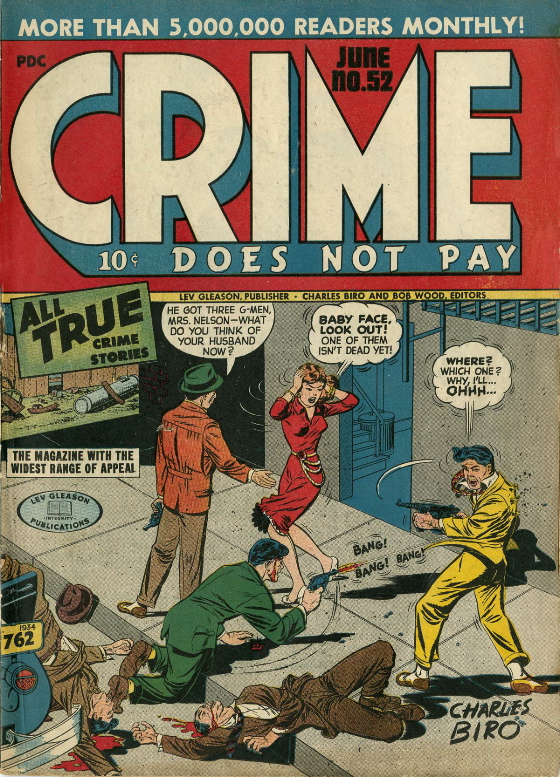
In the glory days (the 1940s and early 1950s) before the comic book industry began to censor itself, to ward off government censorship, comic books could and would show just about anything of a violent nature. Lurid, gruesome, graphic, they approached Elizabethan drama in their obsession with the bloody and the macabre.
I doubt if any of them that came into the hands of young children really rotted the kids' brains or corrupted their morals. Young children know perfectly well, from their intuitions and their dreams, that the human psyche, and thus the real world, is filled with such horror. It is only grownups who try to pretend otherwise.
A powerful art form was crippled by the state-induced censorship, though. Only today has the comic book reclaimed its right to range over the whole landscape of human experience, in the process producing some of the best fiction of our time.
[Via Golden Age Comic Book Stories, the Internet's wonder site.]

